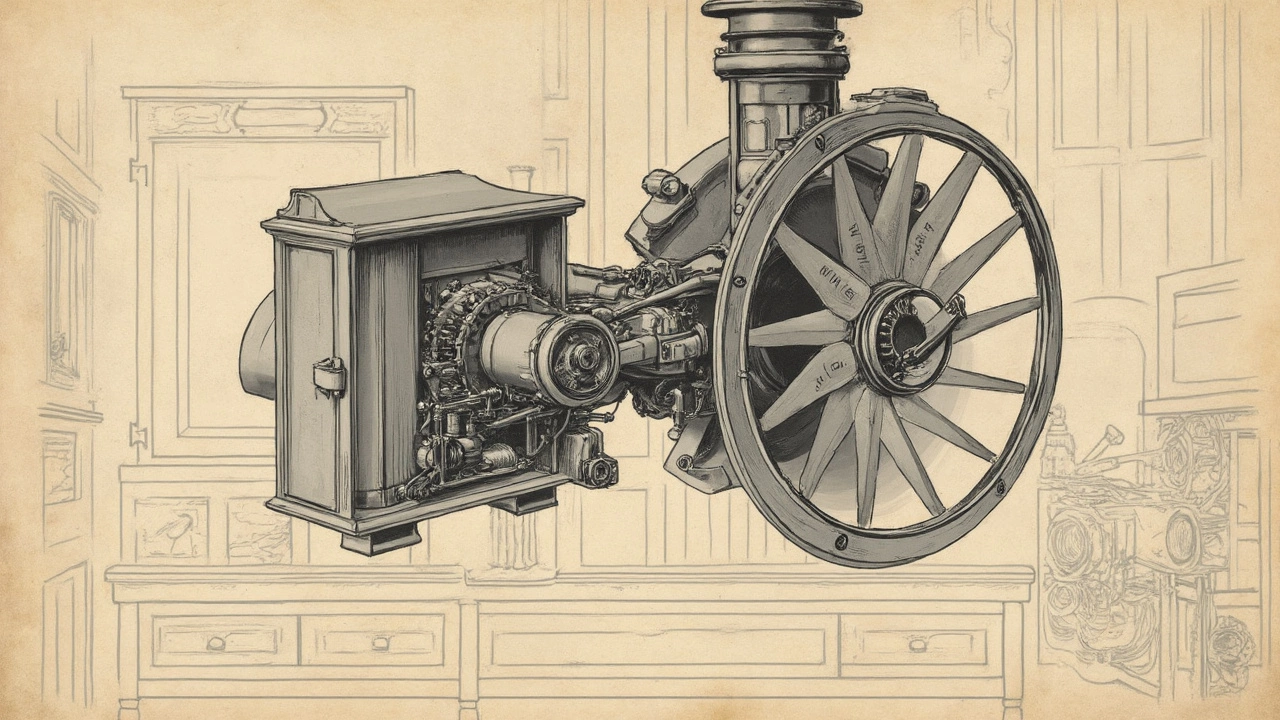Ever found yourself staring at a silent kitchen extractor fan, wondering if there's any hope for the thing? You're not alone. These fans are crucial for getting rid of smoke, steam, and odors, but they can break down over time. Can they be fixed? Absolutely—most of the time.
First off, understanding your fan is key. Models vary, with some having built-in lights or multifunctional features. Know whether yours is ducted or non-ducted, as this will affect troubleshooting. In general, they consist of a motor, fan blades, and filters. Problems typically arise with one of these elements.
Common issues range from strange noises to weak suction. Often, dirt accumulation is the culprit. Giving your fan a good clean can sometimes breathe new life into it. DIY enthusiasts might find this a satisfying weekend project, provided you follow safety guidelines.
There are cases, though, where the trouble might be beyond a basic fix. If the motor's burnt out, for instance, parts might need replacing. And that’s when you might want to weigh the cost of repair against buying a new one.
Understanding Your Fan
It's easy to overlook the unsung hero of your kitchen, the extractor fan. When it comes to fixing these fans, understanding what you've got is the first step. Is it a ducted fan, or is it non-ducted? This detail makes all the difference in how the fan operates and what kind of repairs might be needed.
Extractor fan repair starts with identifying the fan type. Kitchen fans usually fall into two categories:
- Ducted Fans: These are connected through a duct to the outside, venting moisture, smoke, and odors out from your kitchen. They’re effective but may require more complex fixes if the ducting becomes clogged or damaged.
- Non-Ducted Fans: These circulate air back into the kitchen through a filter. They're easier to install and typically less complex, but they need regular filter changes to stay effective.
Most extractor fans have a motor, fan blades, and filters. The motor is the heart of the system, while the blades move air, and filters trap grease and grime. The typical lifespan of an extractor fan is about 10 years, but regular cleaning and maintenance can extend this.
Knowing Your Fan Features
Many models come with additional features like built-in lights or speed settings. If your fan isn't working right, sometimes it's as simple as a faulty light bulb or a tripped switch. Check the manufacturer's manual—it might save you a service call.
To sum it up, knowing your fan's type and features gives you a head start on troubleshooting and repairing. Whether a professional or aspiring DIYer, always turn off power at the breaker box before attempting any maintenance work on your fan maintenance journey.
Common Issues and Solutions
So, your kitchen extractor fan isn't performing like it used to. Let's walk through some common hiccups and see what can be done to fix them.
Strange Noises
Is your fan clattering louder than a rock concert? It’s usually because something’s off balance—either loose parts or debris causing mischief. Carefully take off the cover and look for anything that shouldn't be there. Tighten any screws you see, and give the whole thing a good dusting.
Weak Suction
If it feels like your fan is barely moving air, it could be clogged filters or blocked ducts. For ducted fans, check that the ducts aren't blocked. Clean or replace those filters—they're the lungs of your fan. A good rule? Clean them every few months, more if you're a cooking enthusiast.
Fan Not Turning On
Nobody likes it when flipping the switch does nothing. First, ensure it's plugged in (hey, it happens!). Next, check the circuit breaker. If those aren't the issue, the fan's motor might be cooked. Replacing a motor isn’t a casual DIY job, but if you're handy, there are tutorials out there. Sometimes, buying a new fan is more cost-effective, especially if yours is quite old.
Unpleasant Odors
Extractor fans are supposed to take smells away, not create new ones. Usually, this means filters need a wash—or they’ve been installed incorrectly. Make sure filters are in place properly, and give them a good soak in soapy water or replace them if necessary.
Remember, regular maintenance can keep these problems at bay. Give your kitchen extractor fan some TLC now and then, and it'll thank you by running smoothly and silently.

DIY Repair Tips
Let's face it, tackling a kitchen extractor fan repair all by yourself might sound a tad intimidating, but it doesn't have to be. With some basic tools and a sprinkle of patience, you can sort out common issues in no time. Here's a handy guide to get you started.
Safety First
Before diving in, always switch off the power at the fuse box. You don't want to end up like a cartoon character with frizzy hair!
Clean Those Filters
The simplest DIY fix often comes down to cleaning. Grease and dirt can clog your fan's filter, reducing performance. To start:
- Remove the filter from the fan unit. Check your user manual if unsure.
- If it's a metal mesh filter, soak it in hot, soapy water.
- Use a soft brush to scrub away built-up grime.
- Rinse, dry, and then slot it back in place.
If any parts are beyond cleaning, consider replacing them. These are generally inexpensive and can make a huge difference.
Tighten Loose Parts
Noisy fan driving you crazy? You might just have some loose screws. Tighten components using a screwdriver, ensuring everything’s snug but not overly tight.
Inspect the Ductwork
For ducted fans, examine the ductwork for blockages. A flashlight and a bit of patience will come in handy. Clear any obstructions for an instant performance boost.
Check the Motor
If nothing else works, it’s time to inspect the motor. A burnt-out motor might not be a DIY job, but you can still check connections and look for obvious wear or wiring issues. If it appears faulty, buying a replacement could be a quick fix.
Remember, if the job feels too daunting, there's no shame in calling a professional. Yet, handling kitchen fan fix tasks can save you a chunk of change and give you some DIY bragging rights around the dinner table.
When to Call a Professional
Sometimes, no matter how many YouTube tutorials you watch, the problem just won't budge. That's when calling a professional for extractor fan repair makes sense. This isn't about giving up; it's about knowing when you're out of your depth and need expert help.
First, think about electrical issues. If your fan isn't turning on at all, it could be an electrical problem. Messing with wires when you don't know what you're doing is not a good idea. Electricians have the skills and tools to diagnose and fix these issues without turning the job into a safety hazard.
Another red flag is a burnt-out motor. If turning on your kitchen fan feels like putting your ear next to a jet engine, the motor might be worn out. Replacing or repairing a fan motor is tricky and often best left to the pros. They can ensure the correct motor type and fit for your fan model.
For fans that are hard to reach, like those installed high on the wall or ceiling, a professional should handle it. They have the right equipment to safely perform fan maintenance without risking a dangerous fall.
- If the fan maintenance involves ductwork, especially for ducted models, it's probably best to call an expert. Improperly handled ductwork can lead to inefficient airflow or problems down the line.
- If you see any smoke, sparks, or smell burning when the fan is on, stop using it immediately and contact a professional.
- Finally, if you've made multiple DIY attempts without success, a professional diagnosis can save you time and frustration.
Remember, most professionals offer free or low-cost consultations. You can get an idea of the problem and the cost before committing to a repair. Weigh the pros and cons, and if the price of repair is close to a new fan, replacement might be the smarter choice.

I am an expert in the services industry with a focus on appliance repair. My passion lies in understanding how things work and educating others in simple, engaging ways. This enthusiasm fuels my writing, where I delve into topics around appliance maintenance and troubleshooting. I aim to make these subjects clear and accessible to all readers.